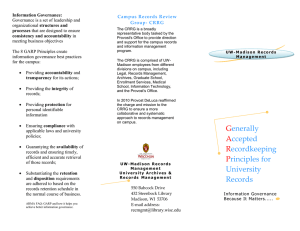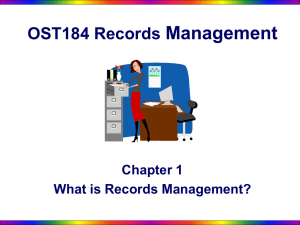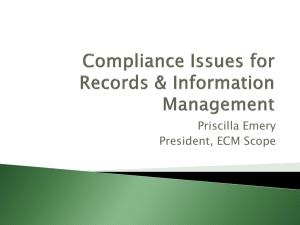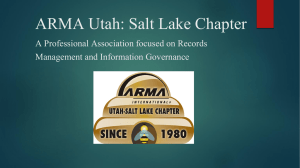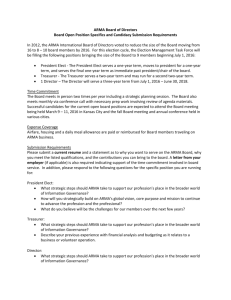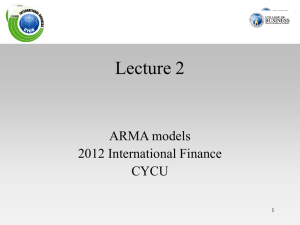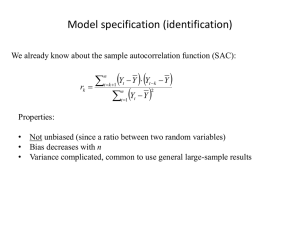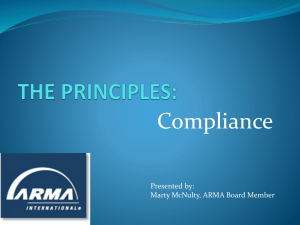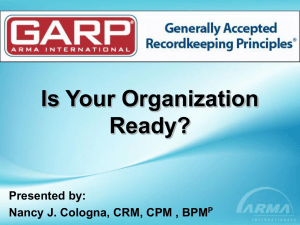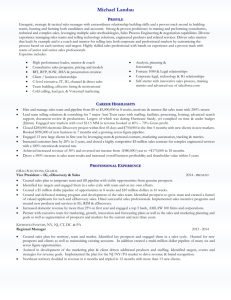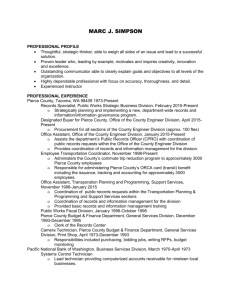GARP® - Arma International Tidewater Chapter
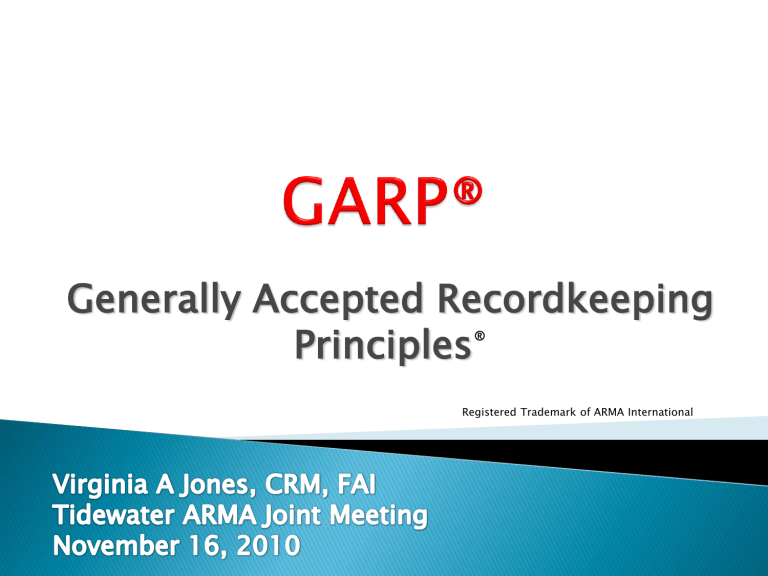
Generally Accepted Recordkeeping
Principles
®
Registered Trademark of ARMA International
a clear statement to guide:
CEOs in determining how to protect their organizations in the use of information assets
Legislators in crafting legislation meant to hold organizations accountable
Records management professionals in designing comprehensive and effective records management programs
Records and recordkeeping are inextricably linked with any organized activity. It is only through the information an organization records in the normal course of business that it can know what it has done and effectively plan what it will do in the future.
A key resource in the operation of any organization
Used in a way that effectively supports the activity of that organization
identify the critical hallmarks of information governance
apply to all sizes of organizations, in all types of industries, and in both the private and public sectors
Accountability
Transparency
Integrity
Protection
Compliance
Availability
Retention
Disposition
A senior executive (or person of comparable authority) oversees the recordkeeping program and delegates program responsibility to appropriate individuals. The organization adopts policies and procedures to guide personnel and ensure the program can be audited.
The processes and activities of an organization’s recordkeeping program shall be documented in an understandable manner and be available to all personnel and appropriate interested parties.
A recordkeeping program shall be constructed so the records and information generated or managed by or for the organization have a reasonable and suitable guarantee of authenticity and reliability.
A recordkeeping program shall be constructed to ensure a reasonable level of protection to records and information that are private, confidential, privileged, secret, or essential to business continuity.
The recordkeeping program shall be constructed to comply with applicable laws and other binding authorities, as well as the organization’s policies.
An organization shall maintain records in a manner that ensures timely, efficient, and accurate retrieval of needed information.
An organization shall maintain its records and information for an appropriate time, taking into account legal, regulatory, fiscal, operational, and historical requirements.
An organization shall provide secure and appropriate disposition for records that are no longer required to be maintained by applicable laws and the organization’s policies.
gives a more complete picture of what effective information governance looks like.
Based on the eight GARP ® principles as well as a foundation of standards, best practices, and legal/regulatory requirements
Registered Trademark of ARMA International
Level 1 (Sub-standard)
Level 2 (In Development)
Level 3 (Essential)
Level 4 (Proactive)
Level 5 (Transformational)
Identify the gaps between the organization's current practices and the desirable level of maturity for each principle.
Assess the risk(s) to the organization, based on the biggest gaps.
Determine whether additional information and analysis is necessary.
Develop priorities and assign accountability for further development of the program.
Where are you?
Where would we like to be?
What is your Strategic Approach?
ISO 15489-1 Information and
Documentation-Records
Management-Part 1: General
ISO/TR 15489-2 Information and
Documentation-Records
Management-Part 2: Guidelines
Records and Information Management
Core Competencies http://www.arma.org/competencies/document.cfm
GARP http://www.arma.org/garp/index.cfm
GARP Maturity Model http://www.arma.org/garp/metrics.cfm
Webinars (free for ARMA members) http://www.arma.org/garp/EDmenu.cfm
Other GARP Education from ARMA
(fee discount for ARMA members)
Online Course: Generally Accepted
Recordkeeping Principles® Overview http://www.arma.org/learningcenter/ onlinecourses/garp.cfm
